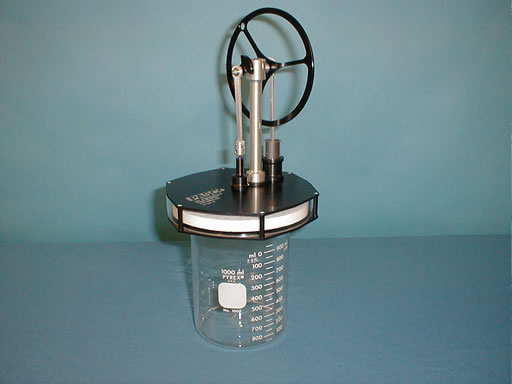Demos: 3E-09 Low Delta-T Stirling Engine

This Stirling Engine can operate on a temperature difference as low as 4 degrees Celsius. If you have warm hands, by holding the device flat against your palm you can provide the energy to power the engine. Please note: not everyone has warm enough hands to do this. To operate the Stirling Engine, heat or cool the bottom plate so there is at least a 4 degree Celsius temperature difference between the top and bottom plate. Give a gentle spin of the flywheel and the engine should run.
Why the Stirling Engine works: If you look between the plates you will see a white foam displacer. The spinning of the flywheel moves the displacer to and away from the sides. The displacer will move away from the warmer side and air will flow into this space and become heated. When heated, the air expands which increases pressure and pushes up on the piston. Next energy stored in the flywheel moves the displacer to the warm side (and away from the cooler side) and the air flows around the displacer to the cold side of the engine. Here the air will cool, contract and the pressure will drop. This will cause the piston to fall. This will again move the displacer away from the warmer side and the process starts again. This will continue until the temperature difference between plates is less than 4 degrees Celsius.